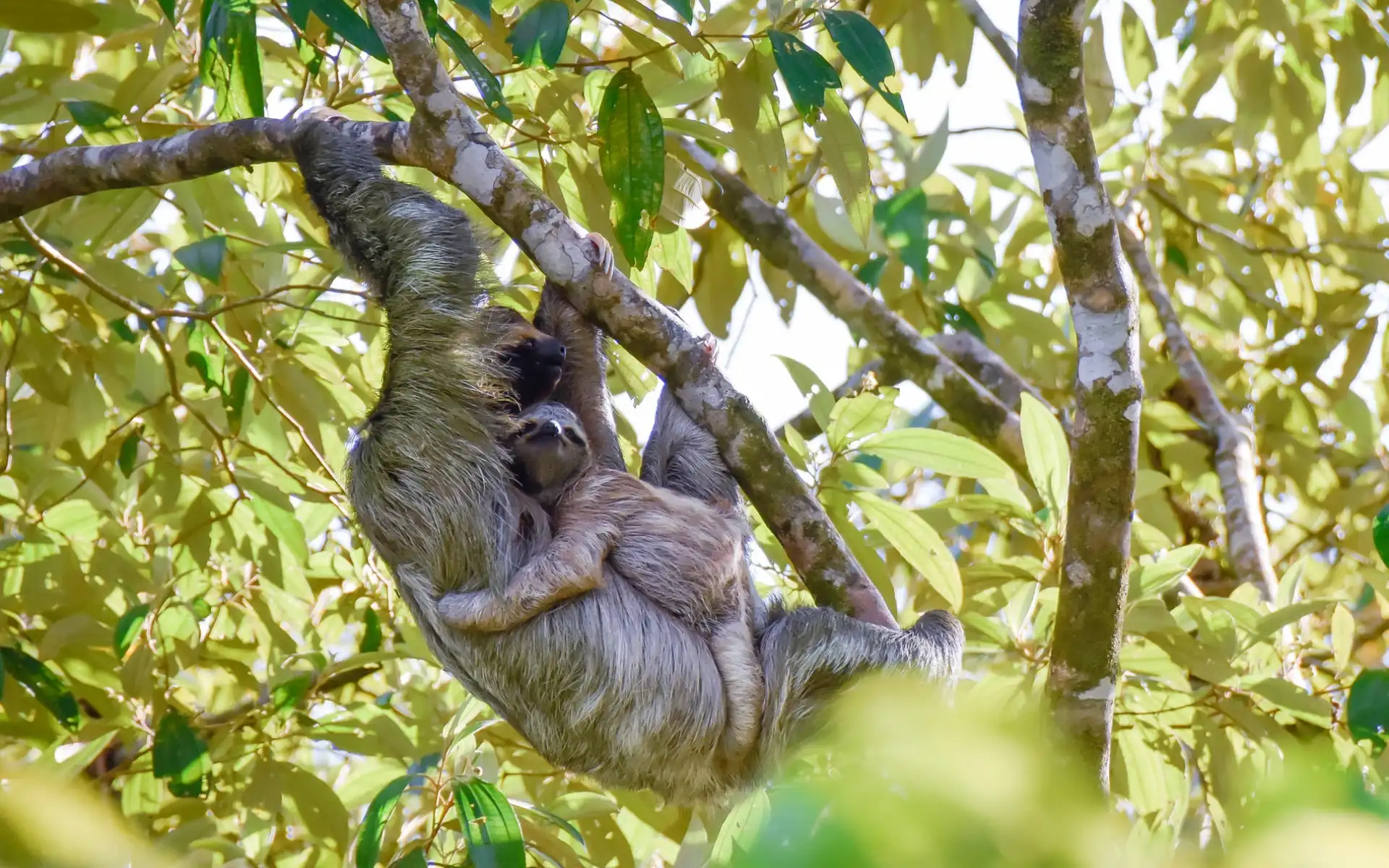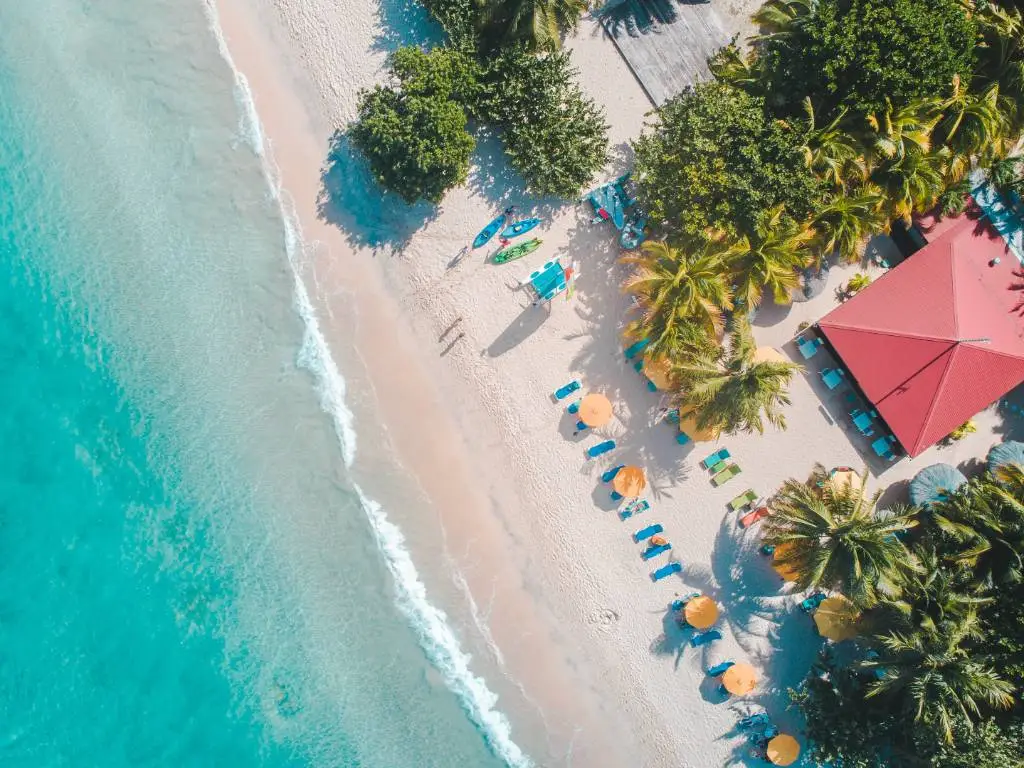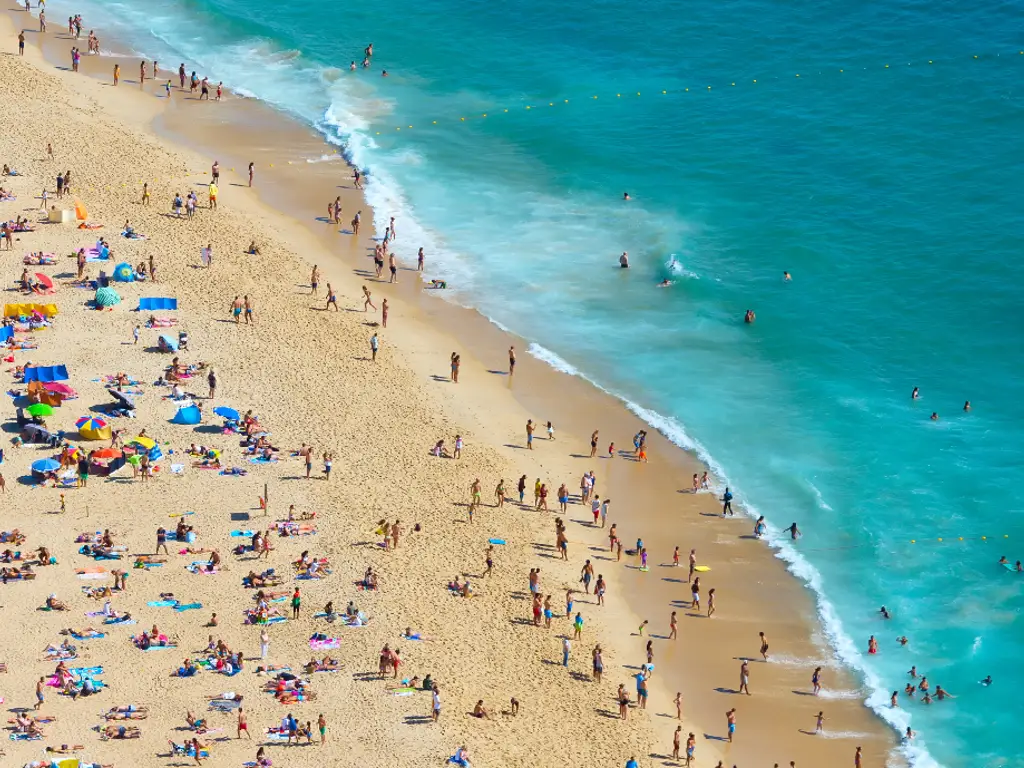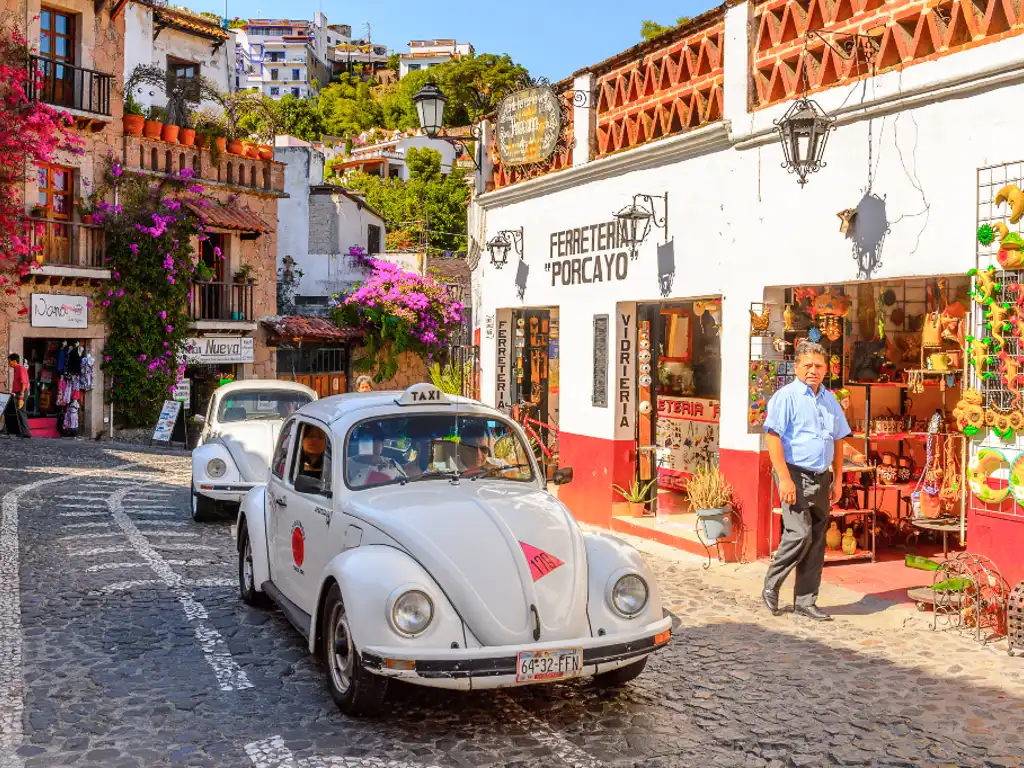
Visiting a Sloth Sanctuary in Suriname
Inside a shallow plastic basket slung across a rustic wooden frame, something stirred. Snuggled into a scrunched-up fleece blanket, lying on her back with long claws wrapped tightly around the branch above her, was a small sloth called Sheep. I shuffled forward to get a better look. Sensing I was near, this furry bundle of cuteness languidly turned her head and stared back at me, wide-eyed.

I was at Suriname’s Sloth Wellness Center on tour with its founder, Monique Pool, learning how the rescue and rehabilitation process works for sloths like this one. Sheep hadn’t had the greatest start to life. Pregnant females give birth in the treetops, but this hapless pup had managed to topple out while her mother was still licking off the birth membrane. Amazingly, she survived the fall; I later learned that sloths have 42 ribs which help protect their internal organs. High in the canopy, her mother could not be tempted down. Without intervention from someone like Monique, Sheep’s future looked bleak.
Monique has been the local go-to person if a sloth was in trouble since taking in her first rescue in 2005. Things ramped up in 2012; she found herself inundated when woodland close to where she lived was felled for development. Unable to bear the thought of animals suffering, she turned her own home into a refuge. Over a period of three months, she and a team of volunteers collected and cared for around 200 sloths.
“Sometimes I felt like a taxi driver for sloths,” she said.
Having so many animals in such a small space was challenging. Even though sloths poop on average only once a week, they prefer to live a solitary existence—company is stressful. Monique needed a more permanent solution. A few years later, thanks to funding from a German non-profit, a slew of charitable donations, and empty shipping containers sourced from a Finnish company, she opened this wildlife rehabilitation center. Located in the Surinamese countryside, it takes in anteaters and armadillos (also members of the xenarthran group of mammals) as well as sloths like Sheep. A year after her rescue, she’s thriving. It will soon be time to return her to the forest.
“Release is the most important part of the process,” Monique told me.

Choosing where to do so isn’t easy. In Suriname, as in other parts of Central and South America where sloths are found, habitat destruction is a significant concern. During the drive from Paramaribo, we passed numerous roadside forest fires. Some were an unintended consequence of the parched, dry season ground. Others were most likely started deliberately. The felling of trees is often prompted by urban development or demand for farmland; when burned, animals have little time to move to safety. Heartbreakingly, deforestation isn’t the only threat to sloths; we also passed the charred remains of one that had been electrocuted on a power line.
The center has helped around 1,200 sloths since it opened and typically receives two to three calls a week about animals in distress. It provides a safe haven where dehydrated or injured sloths can be nursed back to health, and the homeless can be relocated. We hiked along the humid forest floor, stepping gingerly around ants’ nests and keeping a watchful eye out for snakes that could easily be mistaken for tree roots.
Pausing for a moment, volunteer Stellar Tsang showed me a video of a previous release. Sloths like Sheep move surprisingly quickly in short bursts, and despite their slow metabolism—it’s not laziness after all—can climb back to the safety of the canopy in a matter of seconds. And that’s not the only misconception many of us have. Sloths can sleep sitting up; they hang for physiological reasons and so that the images their eyes capture are processed the right way up.

I craned my neck and peered at the leafy branches that shaded us from the relentless heat of the tropical sun. A frisson of excitement coursed through me when we heard a crack in the branches overhead, but it was a small troop of squirrel monkeys. Monique told us sloths were tricky to spot; during the day, the customary stillness of these nocturnal creatures made sightings almost impossible.
By now, it was late afternoon. Monique suggested we head back to the sanctuary as there might be another sloth we could visit. In contrast to the many hundreds of sloths that had been successfully released into the forest, a four-year-old called Cataleya stubbornly refused to leave. All attempts to encourage her had failed. Instead, the center staff had turned a cage into a den, complete with a plushie as a comforter. GHFS staff left the door open so that she could take herself off whenever she wanted, though it was her habit to rock up around feeding time.
Sure enough, there she was. Her unhurried, deliberate movements as she munched on stringy green beans were at odds with that athletic sloth we’d seen in the video, but as she polished off the last one and stretched contentedly, I fancied I saw a smile.
Getting there
The nearest airport is Paramaribo’s Johan Adolf Pengel International Airport (PBM). Taxis take around an hour to reach downtown Paramaribo. The Sloth Wellness Center is about 30 miles west of the city center, just outside the town of Groningen in Saramacca district. For travelers without their own rental car, with a minimum of ten days’ notice, Travel the Guianas tour agency can arrange visits for $75 per person, which includes a donation to GHFS.
Average Going Flight Price: $557 RT

How to do it
- Best time to go: Visits are possible year-round but only by prior arrangement. The forest trail can get wet and muddy after rain; although it is flat and remains accessible, you may prefer to go during the long dry season (mid-August to late November) when the ground is firmer.
- Cost: Visits to the Sloth Wellness Center are free of charge and usually last around two hours. Green Heritage Fund Suriname, the non-profit that oversees the sloth rehabilitation program, welcomes donations. The number of animals being cared for varies considerably, and sightings in the forest cannot be guaranteed; you may wish to ask about the current situation before arranging your visit.
- Safety considerations: Don’t expect to cuddle a sloth during your visit. Not only is it potentially bad for their health—research in Costa Rica suggests they may become tachycardic—as wild animals they can and do bite, plus those long claws can do a lot of damage if they feel threatened.
- Tips: Wear closed-toe shoes, long-sleeved clothing, and a hat to reduce the chance of ticks and botflies finding exposed skin. Though antimalarials aren’t usually recommended for this part of Suriname, it’s nevertheless advisable to use a strong insect repellent while you are in the forest.
More amazing experiences around the world:
Last updated March 12, 2024









